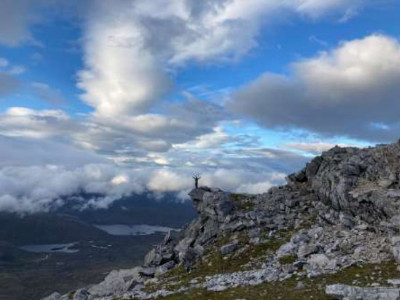Wednesday 9th March 2022, 4:31pm

Scotland is renowned the world over for its wild and spectacular scenery of mountains, moorlands, lochs and rivers and coasts, a draw to locals and visitors alike. Those areas with least human impact have been labelled as ‘Wild Land Areas’ by NatureScot, and research shows that there is strong support from the Scottish people to retain the wildness of these areas.
These wildest places and scenery need strong protection so they can be seen and enjoyed by future generations.
However a newly published report, The State of Wild Land in the Scottish Highlands , shows that this wildness is in long-term decline because of the continuing pressure for development, both within the Wild Land Areas and around their fringes.
The report concludes that the overall rate of loss appears to be increasing as the scale of development has also increased. Current developments that pose the greatest threat are energy generation and associated infrastructure (hydro-electric schemes and wind farms), plantation forest expansion and hill track construction, the latter often associated with estate management. This long-term attrition of wild land is not helped by the fact that there has been a lack of consistency by planning authorities in the way they have handled its protection from new developments.
The Scottish Government is currently consulting on its strategic plans for the country through the draft National Planning Framework 4 (the consultation runs until 31 March 2022). If Scotland, and particularly the Highlands, is to retain its reputation for its iconic scenery, it is imperative that the importance of its protection, including its wildness, is fully recognised in the new Framework. This includes stronger protection for Wild Land Areas than is currently envisaged.
Dr James Fenton of the Scottish Wild Land Group, who coordinated the report, said: “There has long been a mismatch between the commonly stated view that the Highlands are renowned for their scenery and the practical measures in place for its protection. This report should be a wake-up call for us all to realise that the Highland landscape is under threat from ill-sited development.
“If we really do care for our scenery, we must ensure that there is strong protection for it in the planning system, including the Wild Land Areas. Otherwise attrition of this fantastic asset will continue apace, and, in time, future generations will inherit an impoverished landscape.
“Of course we need development in the Highlands, but it must be in the right place and not destroy what is the essence of the Highland mountain landscape.”
Report details
The report was commissioned by the Scottish Wild Land Group in association with the Scottish Mountaineering Trust and The Cairngorms Campaign, all of which are voluntary organisation with a keen interest in the protection of wild land. The research was undertaken by Wildland Research Ltd, who have long-running experience in the mapping and evaluation of wild land in Scotland, and by the Ian Kelly Planning Consultancy Ltd, who have particular expertise in looking at the impact of renewable energy schemes on wild land. A sample of four Wild Land Areas were analysed in detail to show the landscape changes which have occurred from the 1750s to the present day.
The report is available to download from the Scottish Wild Land Group’s website: https://www.swlg.org.uk/news.php